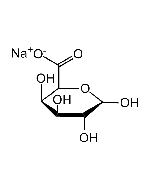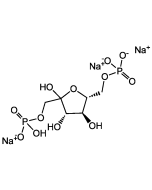Cookie Policy: This site uses cookies to improve your experience. You can find out more about our use of cookies in our Privacy Policy. By continuing to browse this site you agree to our use of cookies.
Chemodex
D-Mannitol

| Product Details | |
|---|---|
| Synonyms | Mannite; Osmitrol; Cordycepic acid |
| Product Type | Chemical |
| Properties | |
| Formula | C6H14O6 |
| MW | 182.17 |
| CAS | 69-65-8 |
| Purity Chemicals | ≥97% (HPLC) |
| Appearance | White crystalline powder. |
| Solubility | Soluble in water, alcohol or glycerol. |
| Identity | Determined by NMR. |
| Declaration | Manufactured by Chemodex. |
| Other Product Data |
Click here for Original Manufacturer Product Datasheet |
| InChi Key | FBPFZTCFMRRESA-KVTDHHQDSA-N |
| Smiles | OC[C@H]([C@H]([C@@H]([C@@H](CO)O)O)O)O |
| Shipping and Handling | |
| Shipping | AMBIENT |
| Short Term Storage | +20°C |
| Long Term Storage | +20°C |
| Handling Advice | Protect from light and moisture. |
| Use/Stability | Stable for at least 2 years after receipt when stored at +20°C. |
| Documents | |
| Product Specification Sheet | |
| Datasheet |
 Download PDF Download PDF |
Sugar alcohol that can be used as an inert osmotic control substance. The uptake and phosphorylation of D-Mannitol is catalyzed by the mannitol-specific phosphoenolpyruvate-dependent phosphotransferase systems (PTS). Used in pharmacy as excipient and diluent for solids and liquids and in analytical chemistry for boron determinations. It is used as an anticaking and free-flow agent, flavoring agent, lubricant and release agent, stabilizer and thickener and nutritive sweetener in the food industry. Used in sweetness inhibition studies. Can interact with neutrophils and monocytes. Experiments have shown that it is able to decrease neutrophil apoptosis in vitro. Can lower fat digestibility and body fat accumulation in rats, as well as upregulate monocyte HLA-DR, monocyte and neutrophil CD11b.
(1) Q. Wang, et al.; Drug Metab. Dispos. 36, 2244 (2008) | (2) M. Turina, et al.; Inflammation 31, 74 (2008) | (3) A. Nishiyama, et al.; J. Nutr. Sci. Vitaminol. 55, 242 (2009) | (4) B.C. Saha & F.M. Racine; Appl. Microbiol. Biotechnol. 89, 879 (2011) | (5) A. Kumar, et al.; J. Clin. Diagn. Res. 8, GE01 (2014) | (6) H.L. Ohrem, et al.; Pharm. Dev. Technol. 19, 257 (2014) | (7) P. Andre & F. Villain; Int. J. Cosmet. Sci. (2016)










